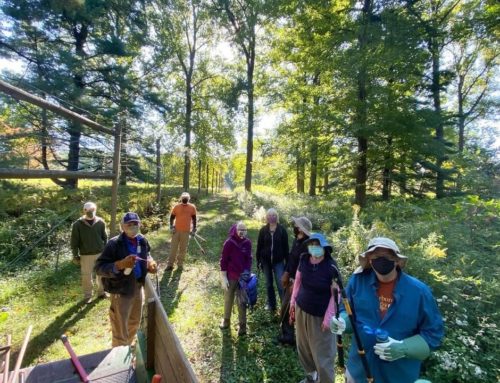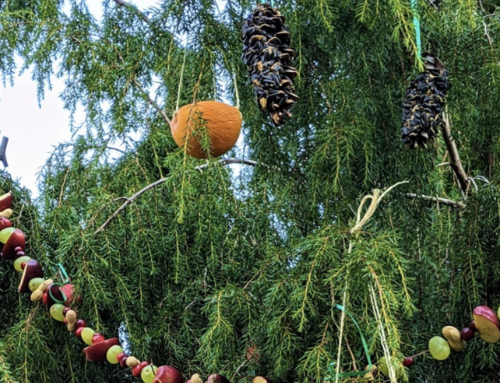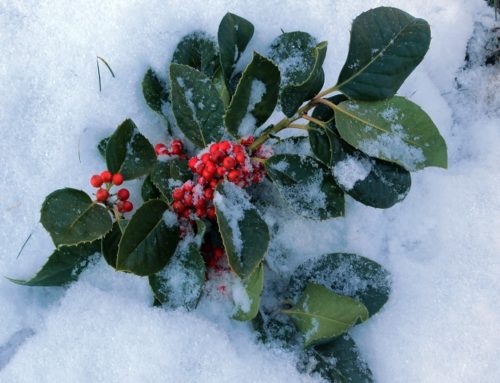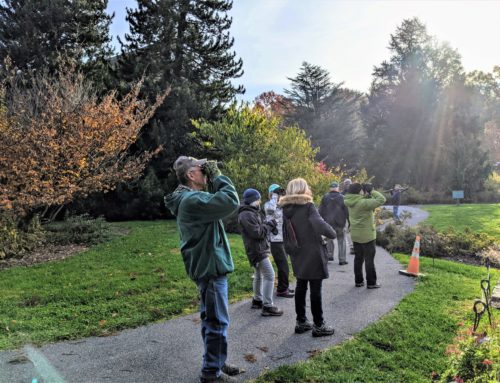Insects and birds look to the plants in our gardens to survive the winter months. Some of them, like woolly bear caterpillars, overwinter in their larval stage, buried deep beneath the cover of the leaves. Others like praying mantids lay their eggs in cases attached to the stalks of plants. The spice bush swallowtail butterfly spends the cold months as a chrysalis. Species of native bees bury themselves in honeycombed nests beneath the soil, relying on the layers of leaves and last year’s perennials to keep them safe and hidden.
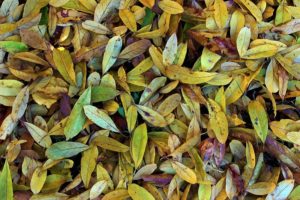
But all of those strategies rely on cover to be present. These insects need the leaves and the dried stalks of last season’s flowers to make their winter homes. The birds need the seeds from late season black eyed Susans and coneflowers as a food source as temperatures decline. But when we do our fall cleanup, we often remove this essential resource.
Historically, the fall garden tasks all centered on making your garden look tidy for winter. Rake up all the leaves and bag them for removal. Cut back the perennials and pull the old vegetable plants from the garden. At the end of the season the goal was to have a nice mulched bed with only the knee high crowns of the perennials remaining. But that strategy leaves all the critters who rely on plants and leaves for winter shelter without a home.
So what’s a gardener to do? The most ecological answer, of course, is to leave everything. Let your perennials stand through the winter and rake your leaves back into the garden beds. Then in the spring you can do the clean up when the temperatures warm and you start to see new growth emerging. But what if you can’t stand the look of an ‘untidy’ winter garden?

At Tyler, our treatment of perennials is dependent on location and the plant. Mallory Smyth, Native Woodland Walk Gardener, cuts down tall perennials that would seed in such as blue star and sea oat grass in the Parking Lot. The planting in the Parking Lot is meant to greet visitors – showing the diversity of plants on the grounds. She leaves the switchgrass as it is very ornamental in the winter. The tartarian aster gets cut down as it would fall into other plants or on to the vehicle entrance, making the area appear untended. In the Barn Garden plants are removed as they start to look shabby, leaving only the ones that remain upright and tidy through the winter such as little bluestem and ironweed ‘Iron Butterfly’ until spring cleanup.
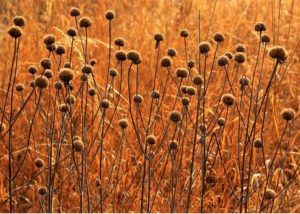 This illustrates that cutting back your perennials doesn’t have to be an all or nothing approach. If you love the graceful golden silhouette of switch grass against a pale blue winter sky, or the look of a fresh cap of snow on a sturdy planting of stonecrop, then leave those plants standing. But if drooping yellow Iris leaves, or browning hosta drive you crazy cut those back. Being thoughtful about what you remove allows you to leave shelter for birds and insects, while still maintaining a garden that matches your style.
This illustrates that cutting back your perennials doesn’t have to be an all or nothing approach. If you love the graceful golden silhouette of switch grass against a pale blue winter sky, or the look of a fresh cap of snow on a sturdy planting of stonecrop, then leave those plants standing. But if drooping yellow Iris leaves, or browning hosta drive you crazy cut those back. Being thoughtful about what you remove allows you to leave shelter for birds and insects, while still maintaining a garden that matches your style.
All places in the garden are also not created equal. You can always keep the front facing portions of your garden looking formal and cut back in the winter, while leaving a ‘wildlife corner’ where you skip the clean up until spring. Whichever you choose, your first step is to understand what the plants will do in winter, who lives in those plants and what you like your garden to look like during this time of year. But as the weather gets colder and we all look to hunker down for the winter, the birds and insects looking for shelter will thank you for the wild spaces in your garden.


